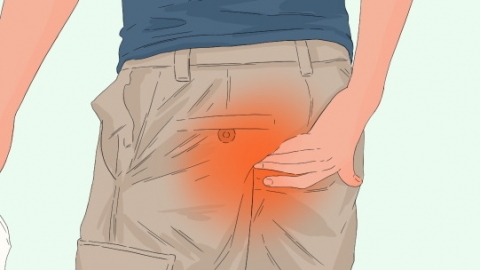How to treat connective tissue hemorrhoids
In general, the treatment methods for connective tissue external hemorrhoids mainly include conservative management, topical medication, oral drug therapy, physical therapy, and surgical treatment. Specific analysis is as follows:

1. Conservative Management
Daily care focuses on reducing irritation and preventing worsening. Patients should maintain cleanliness and dryness of the anal area, gently wiping with warm water after bowel movements and avoiding vigorous friction on the external hemorrhoid. Wearing loose, breathable cotton underwear is recommended, along with avoiding prolonged sitting or standing. Regularly getting up to move around helps promote blood circulation in the anal region. A light diet rich in dietary fiber, adequate fluid intake, and maintaining smooth bowel movements are essential.
2. Topical Medication
Topical treatments are used to relieve discomfort symptoms. Calamine lotion may be applied as directed by a physician when itching occurs; for inflammation and swelling, Ma Ying Long Musk Hemorrhoid Ointment can be used; and for mucosal damage, Compound Carrageenan Cream is recommended to protect the wound surface and reduce irritation.
3. Oral Drug Therapy
This approach primarily supports symptom improvement and prevents complications. For constipation, lactulose oral solution or polyethylene glycol 4000 powder can be taken to soften stools and avoid compressing the external hemorrhoid during defecation. In cases of significant inflammation, micronized purified flavonoid fraction (e.g., Daflon tablets) may be prescribed under medical supervision to reduce venous congestion.
4. Physical Therapy
Physical methods are used to promote recovery. Warm sitz baths, performed 1–2 times daily for 15 minutes each time, help clean the anal area and relax the sphincter muscles. Infrared radiation therapy may also be used, leveraging its thermal effect to improve local blood circulation and alleviate inflammation and discomfort.
5. Surgical Treatment
Surgery is required when external hemorrhoids are large, symptomatic relapses occur frequently, or quality of life is affected. The commonly used procedure is excision of connective tissue external hemorrhoids, which involves directly removing the diseased tissue. If other hemorrhoidal masses are present, this may be combined with external hemorrhoid stripping. Postoperative care of the perianal area is important to prevent infection.
In addition, patients should develop good bowel habits, avoid prolonged straining during defecation, and undergo regular anorectal examinations. If sudden enlargement of external hemorrhoids, increased pain, or bleeding occurs, prompt medical consultation is necessary to adjust the treatment plan.










